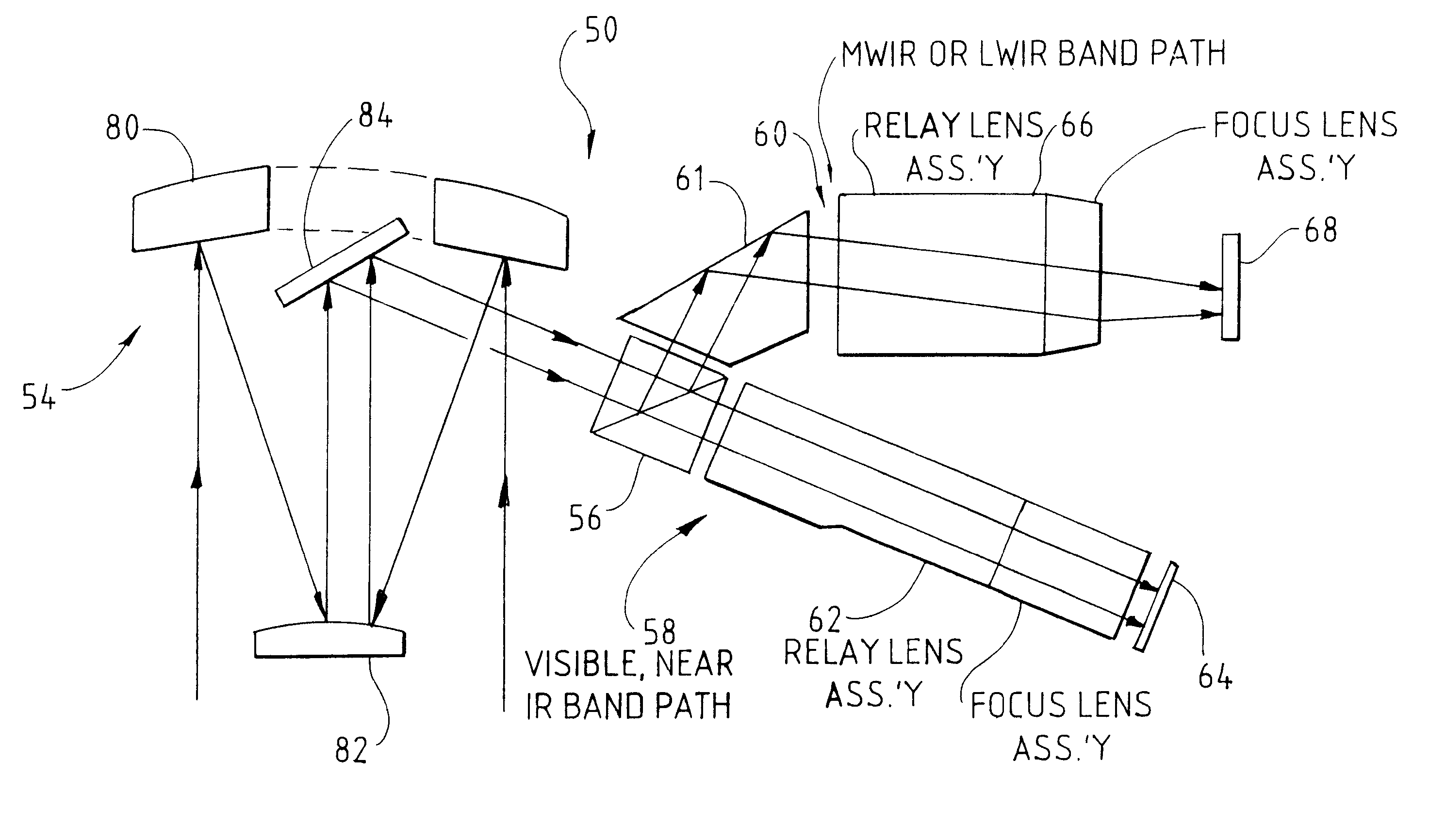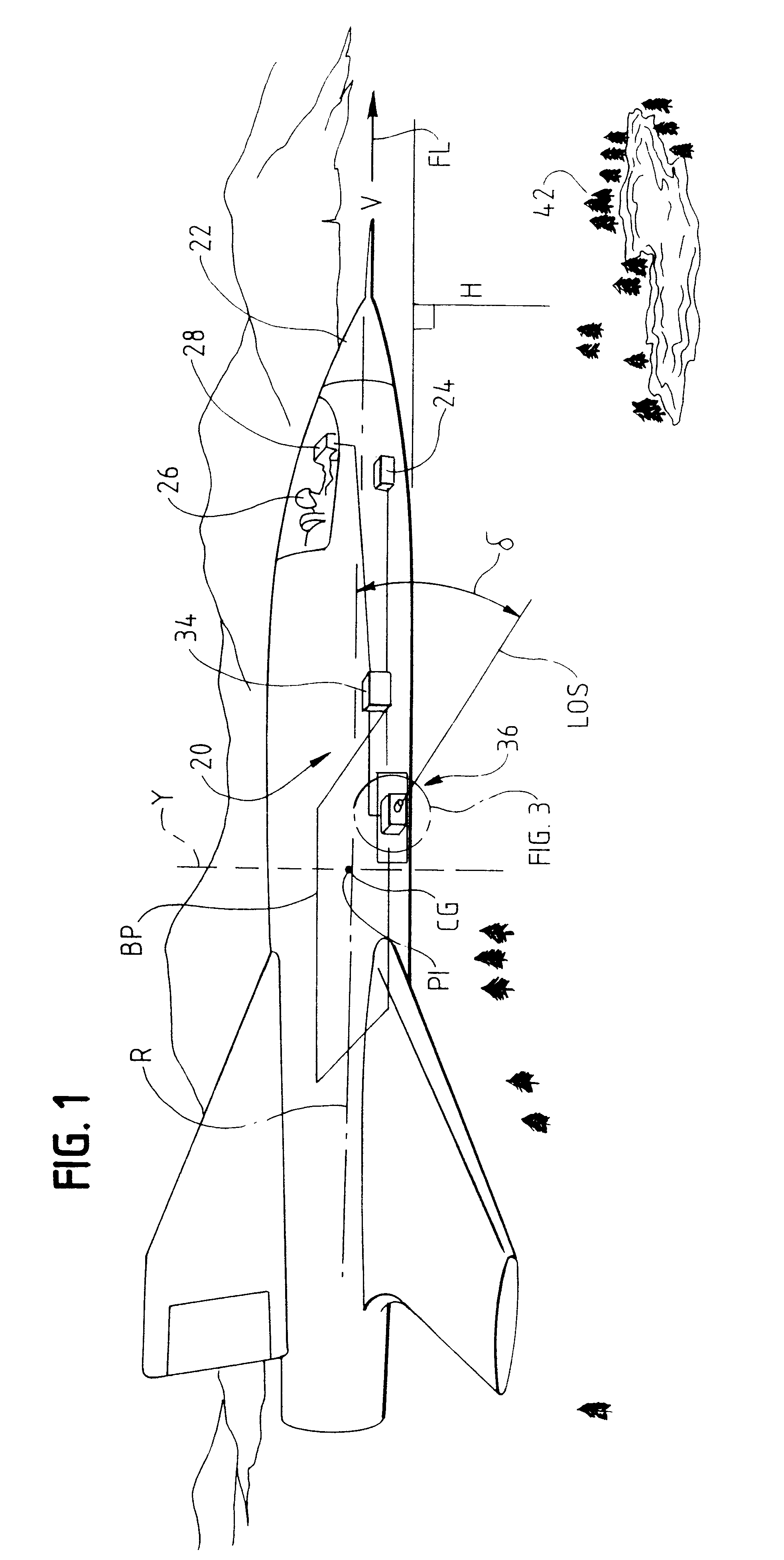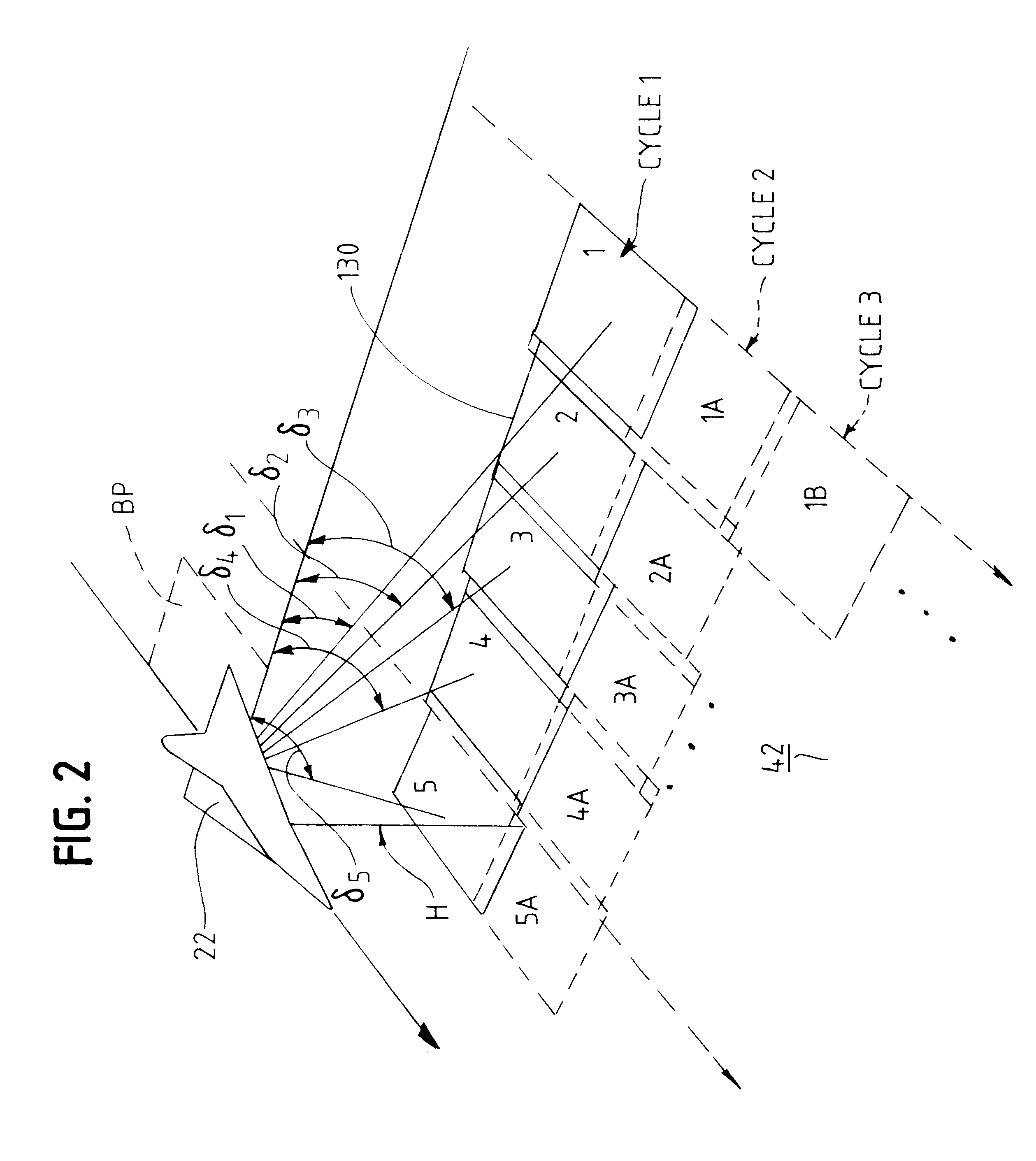Cassegrain optical system for framing aerial reconnaissance camera
- Summary
- Abstract
- Description
- Claims
- Application Information
AI Technical Summary
Benefits of technology
Problems solved by technology
Method used
Image
Examples
Embodiment Construction
The optical system design of the subject camera is driven by the need to illuminate a large focal plane image recording medium and by space constraints, namely the total axial length and the total diameter, which have to be accounted for in potential aircraft installation applications. Thus, while the particular optical design described herein is optimized for a given set of spatial constraints, variation from the illustrated embodiment is considered to be within the scope of the invention.
The optical system 50 of FIGS. 3 and 4 represents a 50-inch, F / 4 optical system designed to operate over an extended spectral region. The objective lens module consists of the Cassegrain optical subsystem 54, comprising the primary and secondary mirrors 80 and 82. The azimuth mirror 84 is utilized to redirect the image forming light bundles into the remainder of the optical system, namely the spectrum dividing prism and the relay lenses and other optical components in the optical paths 58 and 60.
R...
PUM
 Login to View More
Login to View More Abstract
Description
Claims
Application Information
 Login to View More
Login to View More - R&D
- Intellectual Property
- Life Sciences
- Materials
- Tech Scout
- Unparalleled Data Quality
- Higher Quality Content
- 60% Fewer Hallucinations
Browse by: Latest US Patents, China's latest patents, Technical Efficacy Thesaurus, Application Domain, Technology Topic, Popular Technical Reports.
© 2025 PatSnap. All rights reserved.Legal|Privacy policy|Modern Slavery Act Transparency Statement|Sitemap|About US| Contact US: help@patsnap.com



